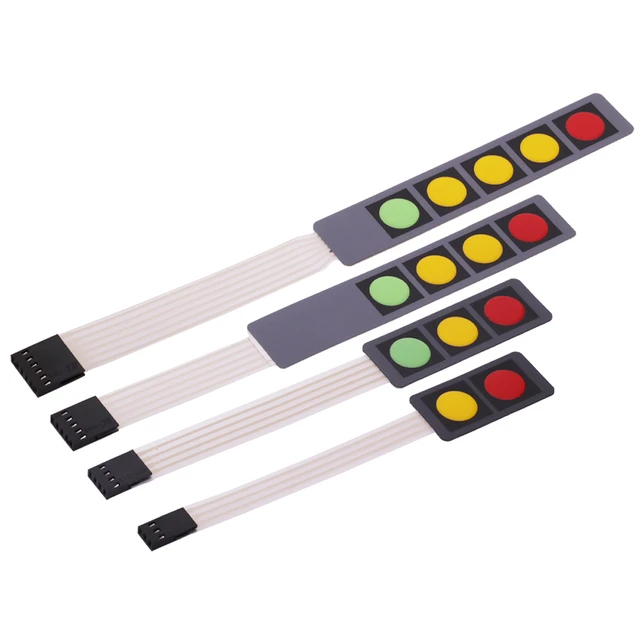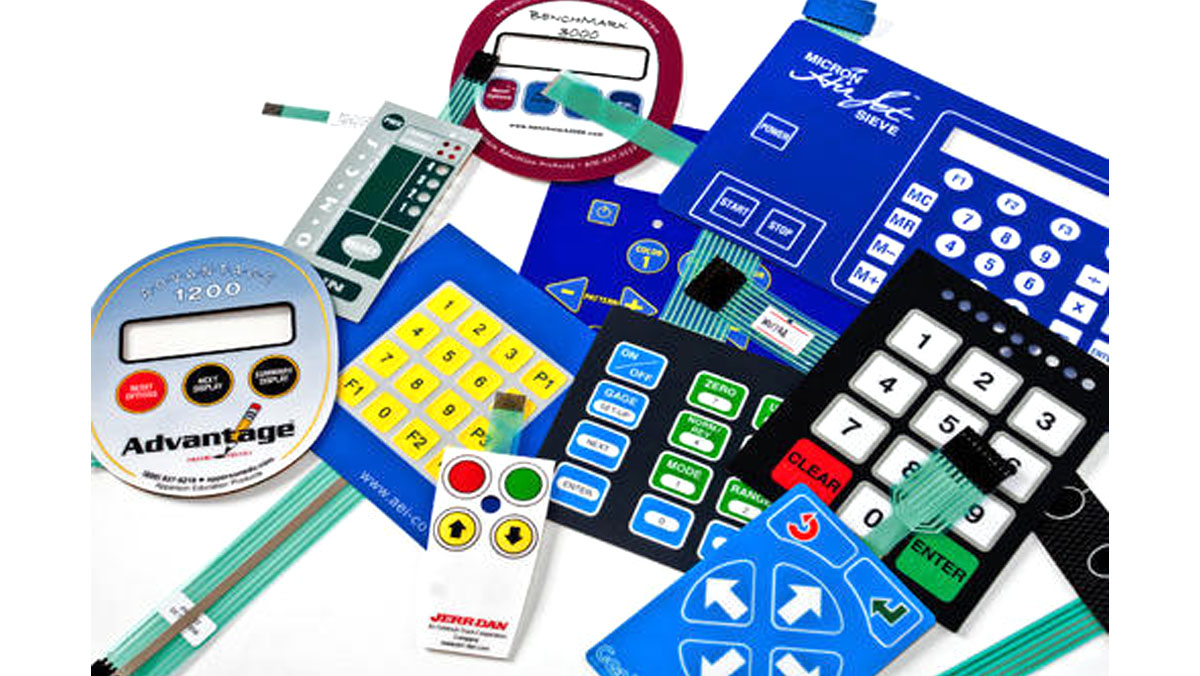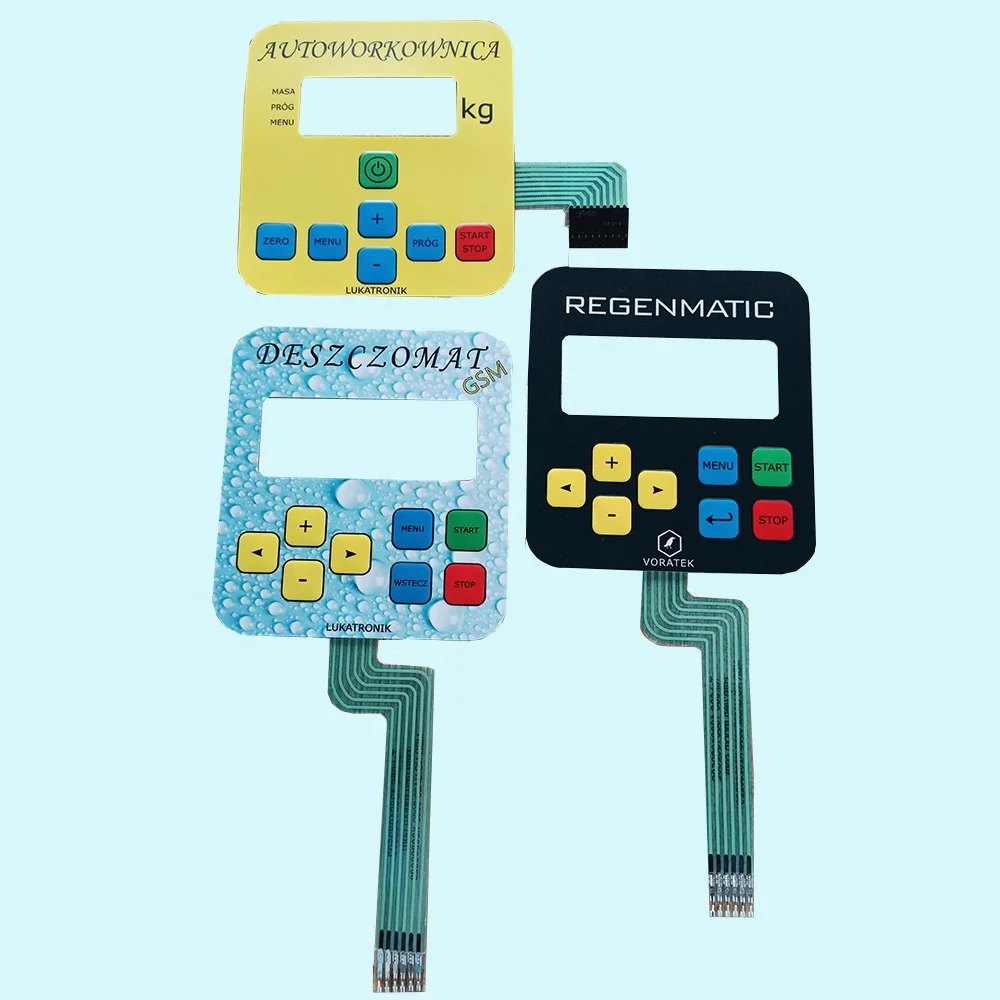Explore the Benefits of Using a Membrane Switch in Modern Devices
Recognizing Membrane Switches: The Key to Reliable and sturdy Controls

What Are Membrane Layer Buttons?
Membrane layer buttons are an advanced solution in the realm of interface modern technology, incorporating functionality and layout effortlessly. These devices act as a user interface between users and digital systems, integrating several elements into a small format. Typically created from versatile, thin layers of materials, membrane switches are developed to reply to touch, making it possible for users to interact with machinery and electronic gadgets effectively.
The primary aspects of a membrane button include a printed circuit layer, graphic overlay, and a spacer layer that stops unexpected activation. The visuals overlay can be customized to show brand identity or user choices, boosting aesthetic appeals while making certain use. Membrane layer switches are typically utilized in numerous applications, including clinical devices, customer electronic devices, and industrial equipment, owing to their durability and resistance to ecological variables such as dampness and dust.
One of the vital advantages of membrane switches is their capacity to stand up to wear and tear, making them ideal for high-traffic settings. Furthermore, they are lightweight and call for very little space, permitting for ingenious designs in item development. Overall, membrane layer changes represent a reliable and useful choice for contemporary electronic interfaces, weding technology with user-centric layout principles.
Just How Membrane Changes Job
The operation of membrane switches over joints on a simple yet efficient device that equates customer input right into electronic signals. These buttons contain several layers, generally consisting of a graphic overlay, a spacer layer, and a circuit layer. When a user presses the switch, the leading layer deforms, allowing a conductive aspect in the circuit layer to reach a corresponding conductive pad on the bottom of the graphic overlay. This contact shuts the circuit and sends a digital signal to the gadget, suggesting that the switch has been activated.
The style of membrane buttons can differ, however they frequently integrate domes or responsive components to give comments to the customer, boosting the overall experience - membrane switch. The materials used in membrane switches, such as polyester or polycarbonate, contribute to their sturdiness and resistance to ecological variables, consisting of moisture and dirt. The printed circuits are normally enveloped, which shields them from wear and tear over time.
Advantages of Membrane Layer Buttons

Additionally, membrane layer buttons are recognized for their resilience. Built from durable materials, they are resistant to dust, wetness, and physical wear, which substantially prolongs their life-span contrasted to standard mechanical switches. This toughness makes them specifically ideal for high-traffic settings and applications calling for durability.
One more considerable advantage is the simplicity of cleaning and maintenance. The smooth surface of membrane layer switches over reduces dust build-up and is frequently impervious to spills, making them optimal for settings visit homepage that require go to my blog frequent sanitization.
Furthermore, membrane buttons supply a structured profile, resulting in a thinner design that can be incorporated right into various devices without including bulk. This feature not just improves the aesthetic charm however likewise adds to an extra ergonomic product design.
Applications of Membrane Buttons
Straightforward and flexible, membrane switches find applications throughout a large range of sectors, including clinical gadgets, customer electronic devices, and commercial equipment. In the clinical area, these switches are indispensable to devices such as diagnostic devices, individual monitoring systems, and infusion pumps, where reliability and convenience of cleaning are crucial. Their capacity to stand up to harsh settings and preserve capability makes them suitable for such applications.

In consumer electronic devices, membrane layer switches are utilized in items like microwaves, washing machines, and remotes - membrane switch. Their sleek style permits intuitive individual interfaces, boosting the overall individual experience while giving longevity and resistance to damage
Commercial equipment likewise takes advantage of membrane layer buttons, specifically in control panels for machinery and automation systems. These switches provide defense against dirt and dampness, ensuring constant performance in difficult settings. Furthermore, their personalized functions allow producers to customize them to details operational demands, find out here improving efficiency and functionality.
Choosing the Right Membrane Change
When choosing a membrane switch, it is necessary to think about different elements that affect efficiency and viability for certain applications. The main considerations include ecological problems, tactile comments, sturdiness, and style specifications.
First, assess the operating setting; buttons exposed to dampness, chemicals, or severe temperatures require details products to guarantee longevity and functionality. Next, assess the need for responsive comments. Depending on customer communication, some applications may take advantage of a responsive reaction to validate activation, while others may prefer a non-tactile layout for visual factors.
Sturdiness is one more important aspect; membrane layer buttons should be created to hold up against regular usage, effects, and abrasion. Guarantee the selected button can sustain the expected lifecycle, specifically in high-usage situations.

Final Thought
In verdict, membrane layer switches over serve as vital components in the layout of long lasting and dependable control systems across different sectors. The adaptability of membrane layer switches over enables for customized services that satisfy details functional demands, reinforcing their value in contemporary technology.
Membrane layer switches stand for an important aspect of contemporary interface design, mixing performance with strength in different applications.Membrane layer switches are an innovative remedy in the realm of user interface technology, incorporating capability and layout seamlessly. Generally built from versatile, thin layers of products, membrane buttons are made to react to touch, making it possible for customers to connect with equipment and digital tools efficiently.
The style of membrane layer switches can vary, but they often integrate domes or tactile aspects to supply comments to the individual, enhancing the overall experience.In final thought, membrane layer changes serve as essential parts in the layout of trustworthy and resilient control systems across numerous markets.